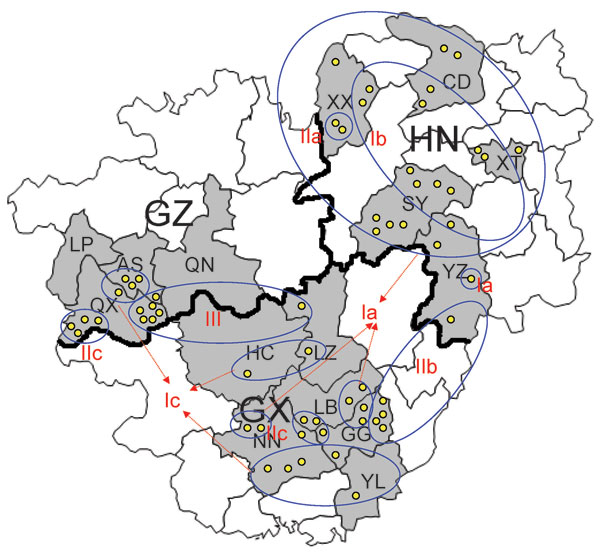Volume 15, Number 8—August 2009
Research
Molecular Epidemiology of Rabies in Southern People’s Republic of China
Figure 1

Figure 1. Locations of 15 cities selected for specimen collection in Guizhou (GZ), Hunan (HN), and Guangxi (GX) provinces, in southern People’s Republic of China, 2005–2007, and genetic groups and subgroups of 60 samples analyzed for rabies virus. Roman numerals and letters indicate genotypes, gray areas indicate regions selected for specimen collection, yellow circles indicate specimens collected, ovals indicate regions with the same genotype, and arrows indicate specimens with the same genotype. LP, Liupanshiu; AS, Anshun; QN, Qiannan; QX, Qianxinan; XX, Xiangxi; CD, Changde; XT, Xiangtan; SY, Shaoyang; YZ, Yongzhou; HC, Hechi; LZ, Liuzhou; LB, Laibin; GG, Guigang; NN, Nanning; YL, Yulin.
Page created: October 04, 2010
Page updated: October 04, 2010
Page reviewed: October 04, 2010
The conclusions, findings, and opinions expressed by authors contributing to this journal do not necessarily reflect the official position of the U.S. Department of Health and Human Services, the Public Health Service, the Centers for Disease Control and Prevention, or the authors' affiliated institutions. Use of trade names is for identification only and does not imply endorsement by any of the groups named above.